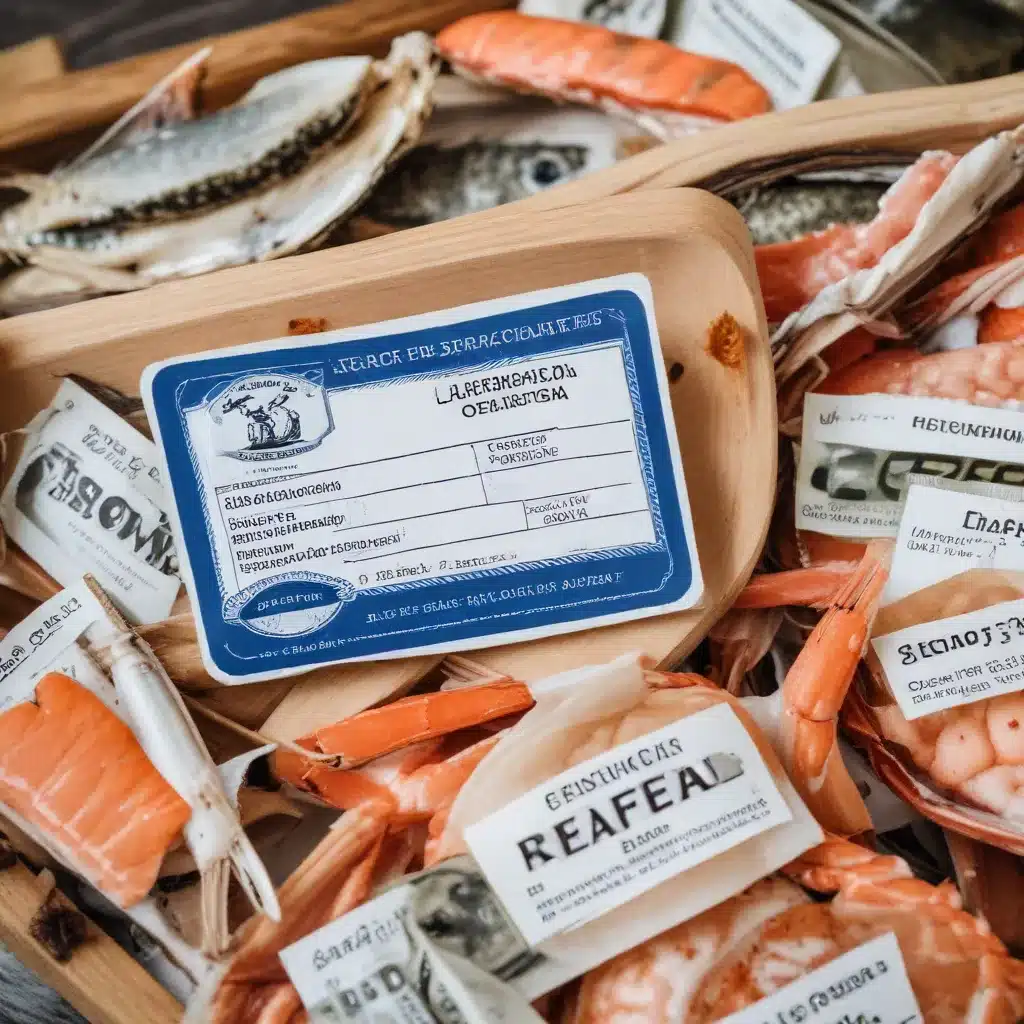
As a seafood dining expert writing for Fish Tales Cafe, I’m thrilled to dive into the complex world of seafood labels and certifications. With the growing demand for sustainable, ethical, and nutritious seafood options, it’s crucial for consumers to understand the landscape of seafood labeling to make informed choices.
Understanding Seafood Certification Programs
At the heart of seafood labeling are various certification programs that aim to provide transparency and assurance to consumers. Among the most prominent are the Marine Stewardship Council (MSC), which focuses on wild-caught seafood, and the Aquaculture Stewardship Council (ASC), which certifies farmed seafood. These certifications evaluate factors like environmental impact, fishing methods, and supply chain traceability to ensure seafood is sourced responsibly.
Another widely recognized certification is Best Aquaculture Practices (BAP), which sets standards for responsible aquaculture practices, including animal welfare, food safety, and social responsibility. By looking for these certifications on seafood products, consumers can have confidence that the seafood they’re purchasing meets specific sustainability and ethical criteria.
Interpreting Sustainability Claims
Beyond formal certifications, seafood labels may also feature claims about sustainability, such as “sustainably caught” or “environmentally friendly.” While these claims can be compelling, it’s important to understand that they are not always regulated or verified. Consumers should look for third-party certifications like MSC or ASC to ensure the validity of sustainability claims.
It’s also crucial to consider the fishing or aquaculture methods used in sourcing the seafood. For example, pole-and-line or troll-caught seafood generally have a lower environmental impact compared to some trawling or dredging methods. Similarly, recirculating aquaculture systems (RAS) and integrated multi-trophic aquaculture (IMTA) are aquaculture practices that can minimize waste and promote ecosystem balance.
Traceability and Transparency
Traceability is a vital aspect of seafood labeling, as it allows consumers to understand the origin and journey of the seafood they’re purchasing. Look for labels that provide information about the specific fishery, farm, or region where the seafood was sourced. This level of transparency can help consumers make more informed decisions and support responsible industry practices.
Technological advancements, such as blockchain-based traceability systems, are also enhancing transparency in the seafood supply chain. By tracking seafood from “boat to plate,” these systems can provide verifiable information about the seafood’s journey, reducing the risk of mislabeling or illegal, unreported, and unregulated (IUU) fishing.
Nutrition and Health Attributes
Seafood is renowned for its impressive nutritional profile, particularly its high content of omega-3 fatty acids. Labels may highlight the specific amounts of these healthy fats, as well as information about mercury levels or protein content. Consumers with dietary restrictions or health concerns can use this information to select seafood that aligns with their individual needs.
Ethical and Social Responsibility
In addition to environmental sustainability, seafood labels may also indicate a product’s adherence to ethical labor practices and social responsibility standards. Look for fair trade or fair labor certifications, which ensure that the workers involved in the seafood supply chain are treated fairly and provided with safe working conditions.
Some certifications also consider the impact of seafood production on local communities, evaluating factors like economic development, food security, and cultural preservation. By supporting seafood products with these ethical certifications, consumers can contribute to a more equitable and socially conscious seafood industry.
Regulatory Frameworks and Ecolabeling Standards
The seafood industry is subject to a complex web of regulations, both domestically and internationally. In the United States, the Seafood Import Monitoring Program (SIMP) requires importers to provide information about the origin and supply chain of certain seafood products, helping to combat IUU fishing.
Beyond national regulations, various ecolabeling standards, such as those established by the Food and Agriculture Organization (FAO) and the International Organization for Standardization (ISO), provide guidelines for sustainable seafood certification programs. Understanding these regulatory frameworks and ecolabeling standards can help consumers navigate the credibility of seafood labels and certifications.
Seafood Supply Chain Transparency
Traceability is a vital aspect of seafood labeling, as it allows consumers to understand the origin and journey of the seafood they’re purchasing. Look for labels that provide information about the specific fishery, farm, or region where the seafood was sourced. This level of transparency can help consumers make more informed decisions and support responsible industry practices.
Technological advancements, such as blockchain-based traceability systems, are also enhancing transparency in the seafood supply chain. By tracking seafood from “boat to plate,” these systems can provide verifiable information about the seafood’s journey, reducing the risk of mislabeling or illegal, unreported, and unregulated (IUU) fishing.
Consumer Empowerment
To further empower consumers, various organizations and initiatives have developed seafood guides and resources to help shoppers navigate the complex world of seafood labels and certifications. Apps like Seafood Watch and FishChoice provide up-to-date information on sustainable seafood options, while campaigns like “Say No to IUU” raise awareness about illegal fishing practices.
By familiarizing themselves with these tools and resources, consumers can become more discerning and make purchasing decisions that align with their values and preferences. As the demand for sustainable and ethical seafood continues to grow, these consumer-focused initiatives will play a vital role in driving positive change throughout the industry.
In conclusion, seafood labels and certifications are essential tools for consumers to navigate the diverse and ever-evolving seafood market. By understanding the meaning behind various certifications, assessing sustainability claims, and considering factors like nutrition, ethics, and transparency, seafood enthusiasts can make informed choices that support a more sustainable and responsible seafood industry. With this knowledge in hand, consumers can feel empowered to savor their seafood while contributing to a more ethical and environmentally conscious future. Visit Fish Tales Cafe to explore more expert insights and discover delicious seafood recipes that align with your values.

